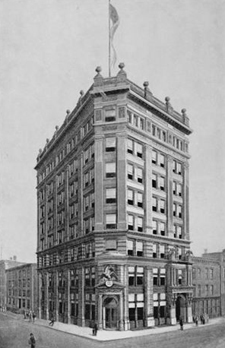On This Day in History, March 16: The Eagle Falls Silent

On March 16, 1955, the original Brooklyn Eagle officially ceased publication. The last issue of the 114-year-old newspaper had rolled off the presses on Jan. 28, 1955. At that time there was still hope that the newpaper would be able to survive, but after a labor strike that even federal arbitration could not settle, the Eagle fell silent as the borough’s voice.
Publisher Frank D. Schroth was unable to come to a labor agreement with the New York Newspaper Guild, and on March 16 wrote a letter to the Guild: “As of today the Brooklyn Eagle has not published for 47 days. So after 114 years without ever having missed an edition, we are giving up … In these circumstances there is no hope for us. The Newspaper Guild problem is malignant…So the Pulitzer Prize-winning paper of Whitman, Van Anden and McKelway has been silenced forever, and Brooklyn, the largest community in America without a voice, will indeed be doomed to be cast in Manhattan’s shadow.”
In the Beginning